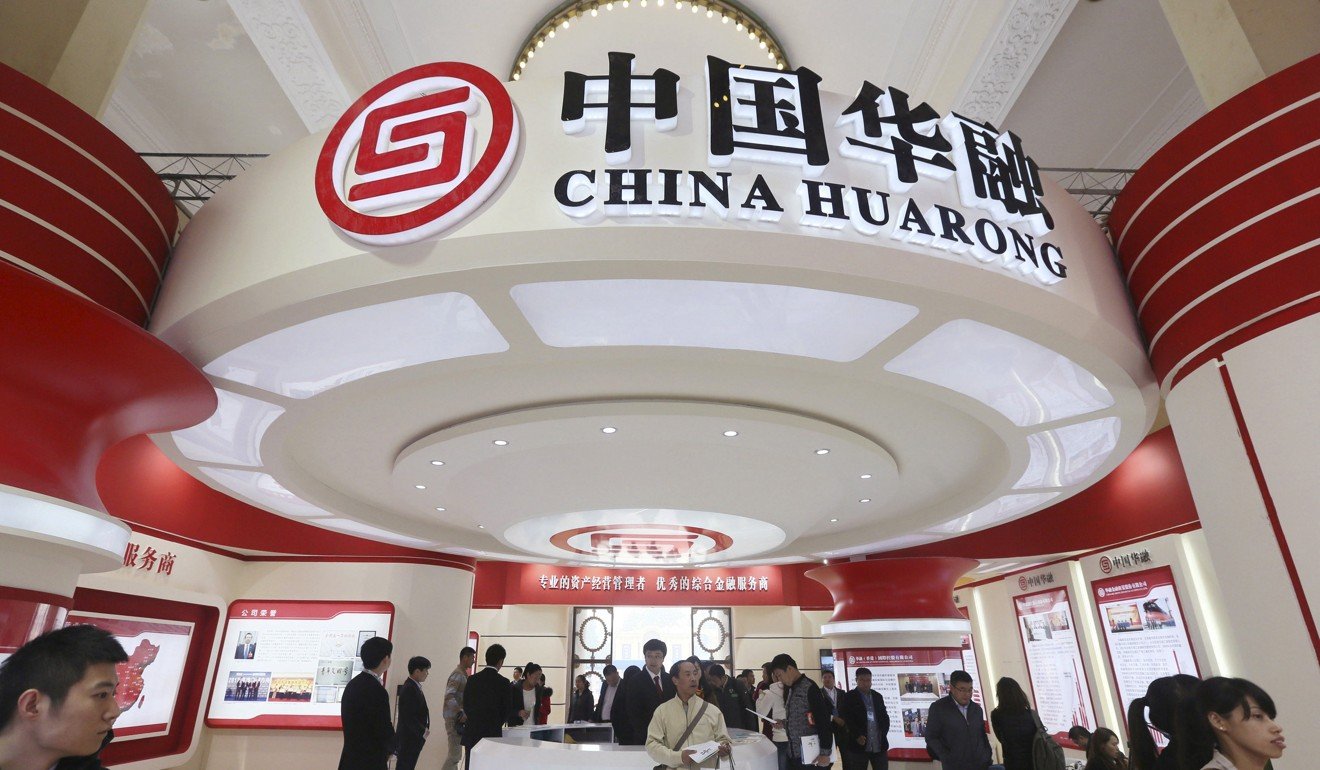
Head of China’s biggest bad-debt manager Huarong under investigation for graft
Lai Xiaomin latest high-profile financial executive to be targeted by authorities
Trade in shares of China Huarong Asset Management, the country’s largest bad loan manager, was suspended on Wednesday morning in Hong Kong, after China’s anticorruption watchdog put its chairman, Lai Xiaomin, under investigation.
Set up in 1999 to handle distressed assets, Huarong is one of China’s big four “bad” banks, which between 1999 and 2005 soaked up non-performing loans worth 1.4 trillion yuan (US$222.63 billion) from state-owned banks.
Lai, 55, was placed under investigation for suspected “serious discipline violations”, an euphemism for graft, according to the website of China’s Central Commission for Discipline Inspection, making him the latest in a string of high-profile financial executives to be targeted by authorities.
It was unclear what charges he faces, but according to Chinese media outlet Caixin, Lai had been channelling funds worth dozens of billion yuan to a Ningxia-based private company for years. The 21st Century Business Herald reported that there was an internal report by Huarong staff about Lai’s wrongdoings.
The spread of Huarong’s 2027 US dollar bonds rose by 2.5 basis points on Wednesday to 228 basis points at 9.29am in Hong Kong, its widest spread since it was issued in October last year, prices compiled from Bloomberg show.

Lai has previously reiterated his role in growing Huarong’s assets and boosting its performance in public speeches, and emphasised that distressed debt managers should play their unique role during China’s economic slowdown, which includes handling non-performing loans and conducting debt-for-equity swaps.
Huarong’s total assets surpassed 1 trillion yuan in mid 2016, growing 32 times from what they were in 2008, according to the company’s website.
The company has been one of China’s most aggressive investors, taking up distressed assets and lending to companies. It has also been the most active bond issuer on the Hong Kong market, with more than 210 billion yuan worth of bond repayments due in total by 2020, and another 52.7 billion yuan due between 2025 and 2027.
It invested in the troubled private oil giant CEFC, buying a 36.2 per cent stake worth about US$1.5 billion in the unit of CEFC China Energy that was buying a US$9.1 billion stake in Russia’s Rosneft in two tranches in December and February, according to earlier stock market filings.
It remains unclear if Lai’s troubles started with the CEFC, whose chairman, Ye Jianmin, is also reportedly under investigation.
Huarong posted a net profit of 22 billion yuan for 2017 last month, up from 19.6 billion yuan a year earlier.
China is looking to rein in risks in the financial sector, targeting risky lending practices and high corporate debt.
Xiang Junbo, the former chairman of the insurance watchdog, last April became the highest-ranking finance industry official to be investigated for corruption.
Wu Xiaohui, the high-flying former chairman of China’s Anbang Insurance Group, last month went on trial in Shanghai for economic crimes, which include fraud and embezzlement involving more than US$10 billion.

